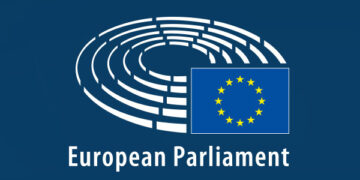This year has seen several high-profile cases of violence being directed against politicians, including the attempted assassinations of Slovakian Prime Minister Robert Fico and former US President Donald Trump. Tal Shaanan, Snehashree Mukherjee, Itzik Ben Israel and Daphna Canetti argue the rise of AI and a lack of regulation of social media content could make these incidents increasingly common.
On 5 August, the Prime Minister of Bangladesh, Sheikh Hasina, resigned and fled from her own country to escape rioters and violence. She has reportedly survived 19 assassination attempts over the last four decades.
On 13 July, former US President Donald Trump narrowly escaped an assassination attempt while on stage near Butler, Pennsylvania. Days later, on 16 July, Ohio police neutralised a knife-wielding man near the Republican National Convention.
A few months earlier, on 15 May, Robert Fico, the Prime Minister of Slovakia, also survived an assassination attempt. An analysis by researchers at the European Policy Centre suggests political violence is now on the rise in the European Union.
These cases are the latest links in a long chain of violence against politicians and public officials recorded across the democratic world. This violence poses a threat to the stability of democracies and liberal values. It reflects strong social divisions and implies high levels of public distress. It is therefore imperative to study and identify the sources of this public sentiment.
The “black sheep effect”
Political violence is usually directed toward an outgroup, typically one perceived as a concrete threat. Such tendencies arise from a desire to restore group cohesiveness in the face of group-related threats. Numerous examples can be found in the context of ongoing armed conflicts, as well as in the political discourse of many democratic countries.
On the surface, it seems counterintuitive to think that harming one’s own political leadership could provide any form of peace. Inherently, attacking political leadership leads to a deterioration in security and social order, pushing a nation to the brink of political turmoil.
This was evident in the assassinations of Israeli Prime Minister Yitzhak Rabin in 1995 and US President John F. Kennedy in 1963. More subtle examples of violent intentions toward politicians include sending threatening letters or participating in inciting discourse that depicts political leadership as a legitimate target for violence.
Violence against a nation’s political leadership is, therefore, context dependent. To justify acts of violence toward political leaders, one must perceive them as the primary source of the current threat. In such cases, deviations from order by ingroup members are judged more severely than similar actions from outgroup members.
This mechanism, known as the “black sheep effect” paradoxically makes it easier to rationalise internally directed violence when the circumstances suggest it as a potential solution. For example, if someone firmly believes their political leaders are failing to handle current threats and provide security during armed conflicts, they might conclude that dismantling this leadership is a necessary step for restoring order.
Similarly, during intense political environments such as election campaigns, if one views a leading candidate from their party as diverging significantly from the party’s core values, they may seek to justify punitive acts, including violence, against them.
AI and social media
Identifying support for political violence among individuals is challenging. Even when granted anonymity, people are reluctant to admit antisocial tendencies such as support for violence. However, multiple studies associate an individual’s recent environment and events with changes in their attitudes toward accepted behaviour, particularly violence.
It is observed that religion plays an important role in determining an individual’s attitude towards violence, especially when they feel deprived or have experienced psychological or economic resource loss. We also need to account for how violence begets violence. It is repeatedly observed in studies that exposure to political violence leads to a deterioration in mental health, leading to further support for political violence. The result remains constant even with indirect exposure to terrorism.
Building on this line of research, exposure to violence is proven to increase support for punitive policies over peaceful negotiations, as well as consent for human rights limitations for outgroup members. It can be argued that, in the right context, this outcome can shift inward, targeting the ingroup’s political leadership.
The growth in deep fakes created using artificial intelligence (AI) and the lack of supervision of social media content are particularly concerning developments given the recent increase in political violence. The use of AI will lead to an exponential increase in the volume of content that can incite violence, elevating the chance of individuals becoming radicalised, especially during tense periods such as elections.
The situation is complicated by laws in the United States, where many social media platforms are based. Specifically, Section 230 of the Communication Decency Act in the US exempts information services, like social media platforms, from liability regarding published content. This outdated law (from the mid-1990s) incentivises social media platforms to maximise engagement by allowing provocative and sometimes violent content, which risks a potential spillover of violent content into other countries and regions as well.
The political landscape has changed dramatically in recent years and there are now numerous ways to influence voters’ lives. The line between election campaigns and exposure to violence is quickly fading. To make campaigns effective, a vast discourse of political ideologies is disseminated across social media platforms, leading individuals to feel constant and immediate threats. The extent to which this contributes to extreme attitudes and behaviour is a question that society must urgently address.
Note: This article gives the views of the authors, not the position of EUROPP – European Politics and Policy or the London School of Economics. Featured image credit: European Union








































Discussion about this post